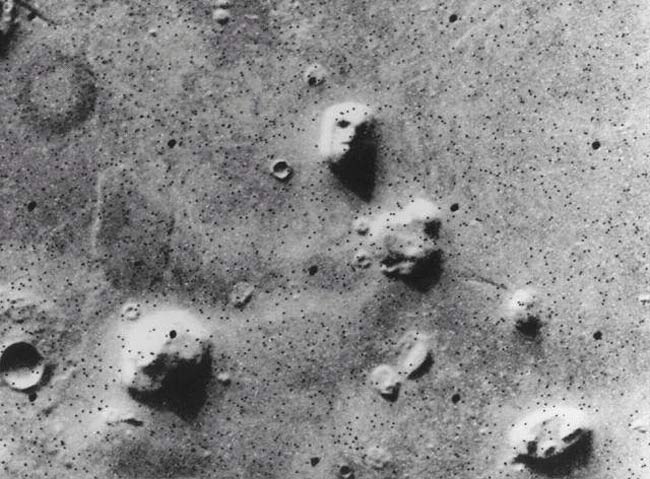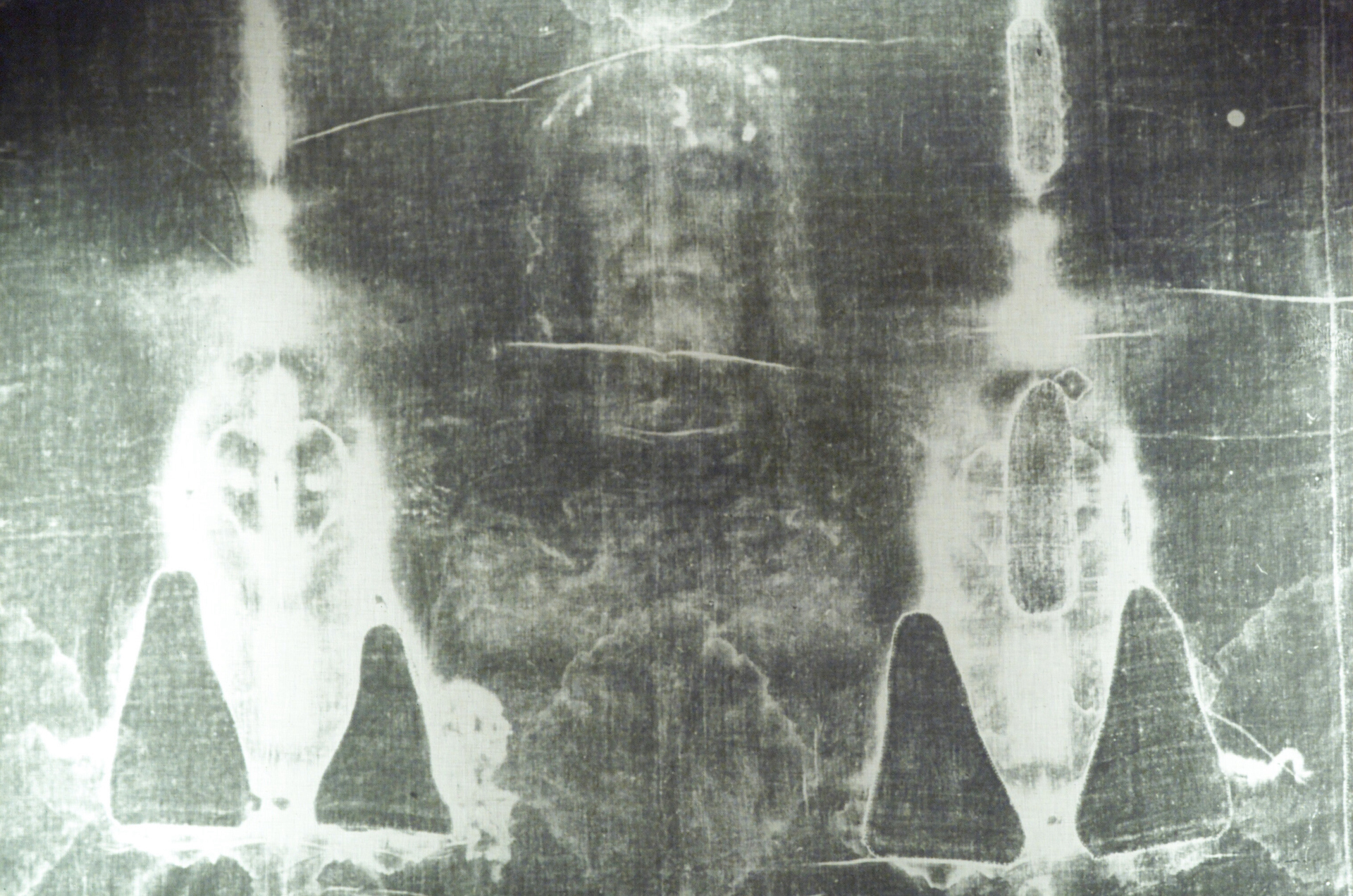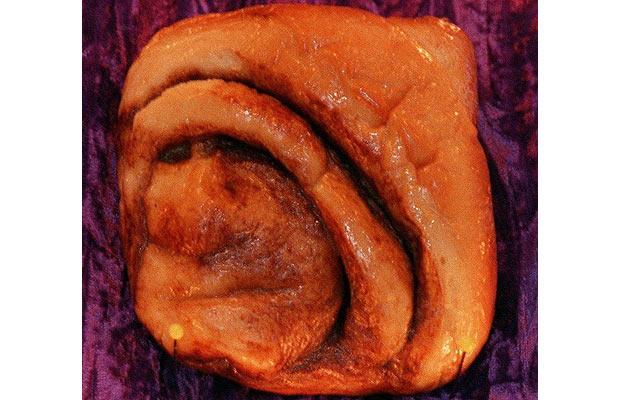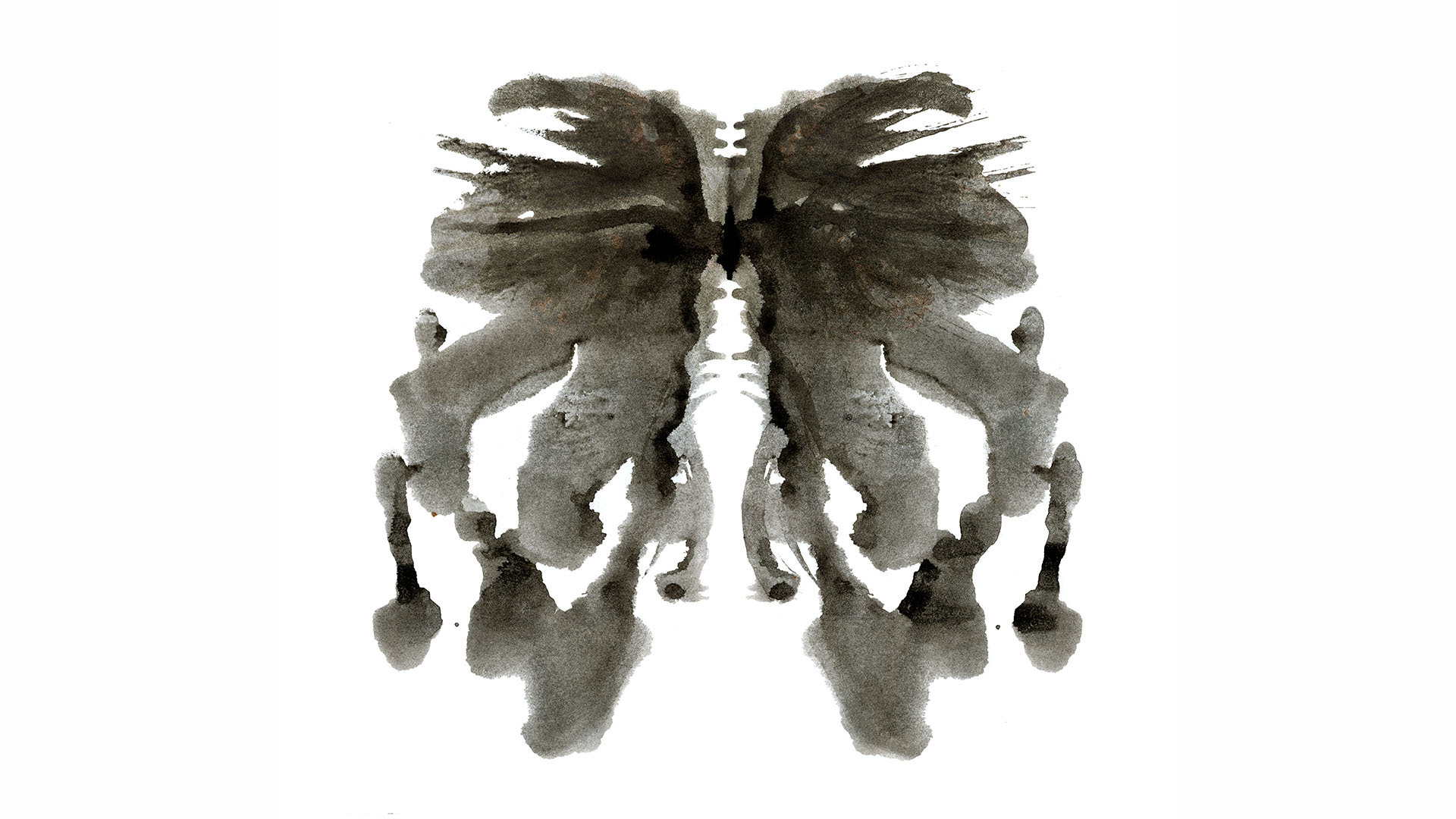What is pareidolia?
Pareidolia is the phenomenon in which people see faces or other patterns in ambiguous images, such as Jesus on toast or the man in the moon.

Pareidolia (pronounced "par-i-DOH-lee-a") is a brain phenomenon in which a person sees or hears something significant in a random image or pattern. Pareidolia is what causes peoples to see faces in inanimate objects, such as an image of the Virgin Mary in grilled cheese or the man in the moon.
The word is derived from the Greek words para, meaning something faulty, wrong, instead of, and the noun eidōlon, meaning image, form or shape. Pareidolia is a type of apophenia, which is a more generalized term for seeing patterns in random data.
Related: Seeing things on Mars: A history of Martian illusions
Examples of pareidolia

People often report seeing human faces or forms in inanimate objects. For instance, many people think the Shroud of Turin bears the image of a man — which some believe to be Jesus — who appears to have suffered trauma consistent with crucifixion.
Some visitors to St. Mary's in Rathkaele, Ireland, say a tree stump outside of the church bears a silhouette of the Virgin Mary. Damage to the Pedra da Gávea, an enormous rock outside Rio de Janeiro, Brazil, created an impression that many interpret as a human face. And many people thought images taken in 1976 by the Viking 1 mission showed a face on Mars that could have been the remnants of an ancient civilization.
But pareidolia doesn't just happen with human faces or faces at all. For instance, in March 2023, some people said they saw a teddy bear on a surface feature on Mars. In another image snapped by Mars rover Perseverance, amateurs thought they spotted a shark fin and a crab claw in random rocks on the Red Planet.
Pareidolia can also be an auditory phenomenon. In September 1969, conspiracy theorists claimed some Beatles records contained clues to Paul McCartney's supposed death. Many heard the words "Paul is dead," when the song "Strawberry Fields Forever" was played backwards, a process known as backmasking.
Get the world’s most fascinating discoveries delivered straight to your inbox.
Related: 20 of the best conspiracy theories
People seem particularly prone to seeing the face of Jesus in objects. For instance, in 1977, a New Mexico woman found Jesus Christ on a flour tortilla. Diane Duyser of Miami sold a 10-year-old grilled cheese sandwich, which she said bore the image of Jesus, for $28,000 on eBay in 2004. And Donna Lee of Toledo, Ohio, saw an image of Jesus on a pierogi she was preparing on Palm Sunday in 2005.
Other religious figures make appearances as well. A cinnamon bun bearing a likeness of Mother Teresa was first discovered at the Bongo Java Café in Belmont, Tenn. It was on display for about 10 years, until it was stolen on Christmas day in 2007.
Why pareidolia happens
There are a number of theories as to the cause of this phenomenon. A 2020 study in the journal Psychological Science suggests that people have evolved brain adaptations to quickly pick out faces from a crowded visual scene. As a result, face pareidolia occurs as a "false positive" in this quick visual processing system.
Interestingly, the human brain not only ascribes facial features to things like grilled cheese or random piles of rocks, it also sees emotion in those images.
"A striking feature of these objects is that they not only look like faces but can even convey a sense of personality or social meaning. For example, the windows of a house might feel like two eyes watching you, and a capsicum might have a happy look on its face," the authors wrote in the study.
In general, humans are likelier to see male, rather than female faces, in inanimate objects, a 2022 study in the journal PNAS found. And our closest living relatives, chimpanzees, do see some face-like features in objects, but not nearly as well as we do. This highlights just how important such social information is to humans as compared with other animals.
Pareidolia can also offer insight into specific brain disorders, such as autism spectrum disorder (ASD) or Parkinson's. Children with ASD have more difficulty identifying face pareidolia, while those with Parkinson's and Lewy Body dementia may experience more pareidolia.
People who experience pareidolia may also be more likely to have paranormal experiences, or say they have extrasensory perception, according to a 2022 study in the journal PLoS One.
The Rorschach inkblot test is an example of "directed pareidolia," which asks people what they see in vague ink blots. They were originally conceived as a way to get at basic processes of human perception but have since been used in legal and psychiatric settings to evaluate personality and mental state. However, many consider using Rorschach tests as a window into the subconscious or into personality disorders to be pseudoscience and Rorschach tests do not meet the evidentiary standards to be used in European legal proceedings, a 2021 study argued.

Tia is the editor-in-chief (premium) and was formerly managing editor and senior writer for Live Science. Her work has appeared in Scientific American, Wired.com, Science News and other outlets. She holds a master's degree in bioengineering from the University of Washington, a graduate certificate in science writing from UC Santa Cruz and a bachelor's degree in mechanical engineering from the University of Texas at Austin. Tia was part of a team at the Milwaukee Journal Sentinel that published the Empty Cradles series on preterm births, which won multiple awards, including the 2012 Casey Medal for Meritorious Journalism.
- Kim Ann ZimmermannLive Science Contributor





